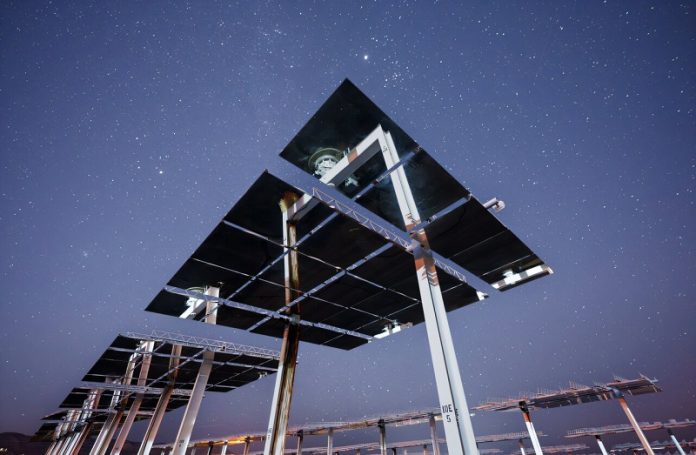
Heliostats—those giant mirrors usually used to reflect sunlight onto solar towers—might soon have a second job: spotting asteroids in the night sky.
Sandia National Laboratories scientist John Sandusky believes these mirrors, which normally work during the day to generate solar energy, could play a surprising new role after dark—helping detect near-Earth objects that might pose a threat to our planet.
“The heliostat fields don’t have a night job.
They just sit there unused,” Sandusky explained. “We have an opportunity to give them a low-cost nighttime role in protecting Earth from asteroids.”
Currently, finding asteroids requires large, expensive telescopes that take pictures of the night sky.
Computers then scan those images for streaks that indicate an asteroid moving against a background of stars.
It’s a reliable system, but it takes time and money, especially if more observatories are needed.
Sandusky’s idea is different. Rather than capturing detailed images of asteroids, he wants to detect their motion—how quickly they move across the sky relative to the stars. To test this concept, he used one of the 212 heliostats at the National Solar Thermal Test Facility in New Mexico.
“During the day, solar towers collect about a million watts of sunlight,” Sandusky said. “At night, we’re trying to detect femtowatts—an incredibly tiny amount of light—reflected from asteroids.”
In his experiment, Sandusky didn’t add any new equipment to the heliostat. Instead, he used existing software to make the mirror slowly swing back and forth every minute. Then, perched 200 feet above the ground on the solar tower, he used optical instruments to measure the light the mirror reflected.
“It was a long, quiet process,” Sandusky said. “I’d collect data in 20-minute intervals, often working until dawn.”
The team didn’t expect to discover any asteroids just yet. Their goal was to prove the concept—that the mirror could sweep the sky and detect stars. That test was a success, and Sandusky says it’s just the beginning.
Beyond finding asteroids, the same method could help the U.S. Space Force track spacecraft in hard-to-monitor areas, like near the Moon. The approach could also be much cheaper than building new observatories from scratch.
Sandusky recently presented his findings at a conference and published a paper in Unconventional Imaging, Sensing, and Adaptive Optics 2024. He’s now looking for feedback from scientists in optics and astronomy to refine the idea.
Next, he hopes to use the heliostat to track a known planet, which would help test the system’s limits. Eventually, he envisions expanding the effort to use many heliostats at once, possibly creating a new, cost-effective tool for keeping an eye on space rocks before they get too close.
Source: Sandia National Laboratories.



